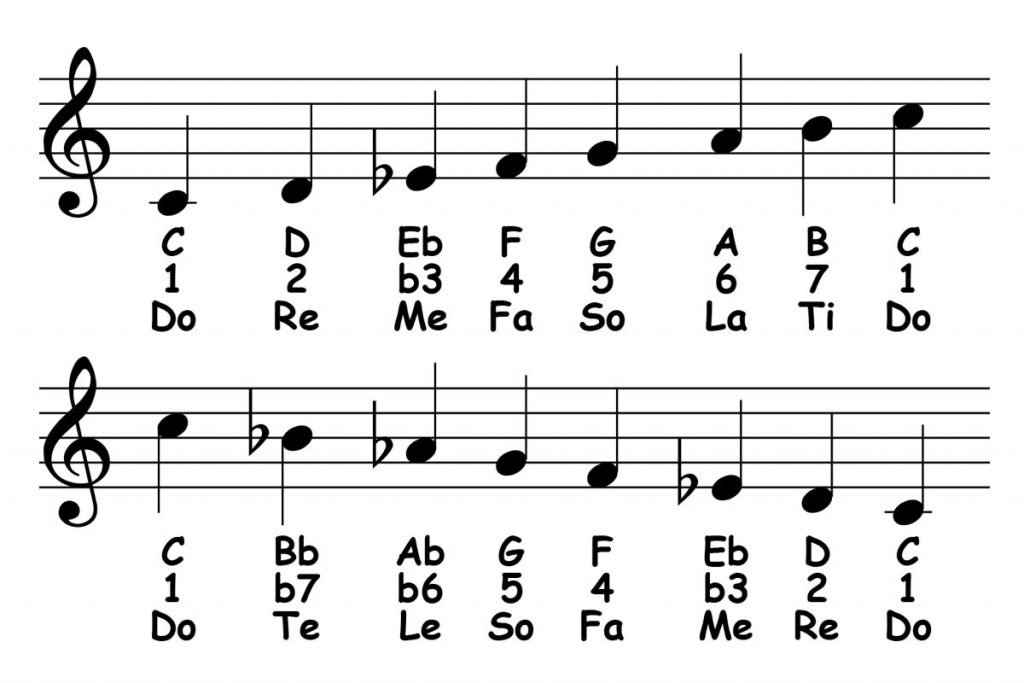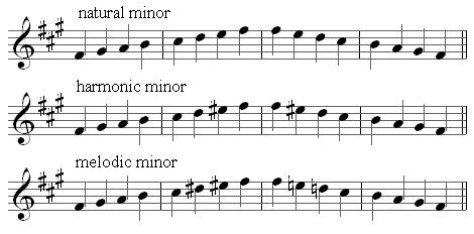

- #Descending natural and melodic minor scales how to
- #Descending natural and melodic minor scales series
The semitones fall between scale degree numbers 2 – 3 and 5 – 6. The natural minor scale is defined by the interval pattern: Though they each have different characteristics, tonal pieces in a minor mode will often draw on elements of each of these scales within the same piece.

The harmonic and melodic minor scales are based on the natural minor scale but have differing chromatic alterations. The natural minor scale, as its name suggests, is a minor scale in its most natural state (with no alterations).
#Descending natural and melodic minor scales series
Like major scales, minor scales also consist of a series of seven pitches, organised around a fundamental tonic.
#Descending natural and melodic minor scales how to
Learn how to play piano and keyboard with Piano For All.There are three common minor scales in use today: the natural minor, the harmonic minor and the melodic minor.Learn how to form major and minor scales in all keys.Learn how to form other types of scales in all keys.Remember that for the melodic minor scale, when descending, you play the natural minor scale. Here’s a diagram of the melodic D minor scale on piano. Perfect 8th: The 8th note of the scale is D.Major 7th: The 7th note of the scale is C#.Major 6th: The 6th note of the scale is B.Perfect 5th: The 5th note of the scale is A.Tonic: The 1st note of the D melodic minor scale is D.(W-H-W-W-W-W-H) The descending formula is the natural minor scale formula backwards. The formula for a melodic minor scale is whole step – half step – whole step – whole step – whole step – whole step – half step. The notes of the A melodic minor scale descending are: D, E, F, G, A, Bb, and C (D natural minor scale). The notes of the D melodic minor scale ascending are: D, E, F, G, A, B, and C#. D Melodic Minor Scaleįor the melodic minor scale, you raise the sixth and seventh notes of a scale by a half step as you go up the scale and then return to the natural minor as you go down the scale. Here’s a diagram of the harmonic D minor scale on piano. Perfect 4th: The 4th note of the scale is G.Minor 3rd: The 3rd note of the scale is F.Major 2nd: The 2nd note of the scale is E.Tonic: The 1st note of the D harmonic minor scale is D.(Whole step – half step – whole step – whole step – half step – whole step and a 1/2 step – half step.) The formula for forming a harmonic minor scale is W-H-W-W-H-W 1/2-H. Harmonic D Minor Scale = D, E, F, G, A, B♭, C#, D Natural D Minor Scale = D, E, F, G, A, B♭, C, D

To play a harmonic minor scale, you simply raise the seventh note of the natural minor scale by a half-step as you go up and down the scale. Let’s now take a look at the D harmonic minor scale. What are the chords in the key of D minor natural? All about the key of Dm and its chords. Let’s now take a look at the chords in the key of D minor. Video – How to Play Dm Scale on piano/keyboard: Thumb: 1, index finger: 2, middle finger: 3, ring finger: 4 and pinky finger: 5. What are the fingerings for the D minor scale? They are as follows: Lastly, one more whole step returns us to D, one octave higher. To build a D natural minor scale, starting on D, we take a whole step to E. “W” stands for whole step and “H” stands for half step. The formula for forming a natural (or pure) minor scale is W-H-W-W-H-W-W. As we’ve seen, the D natural minor uses these same notes, except that the sixth note of the major scale becomes the root note of its relative minor. The notes of the F major scale are F, G, A, B♭, C, D and E. A natural minor scale/key consists of the same notes as its relative major. The relative major key for the key of D minor is F major. Here’s the Dm scale on the piano keyboard. Here’s the D minor scale on the treble clef.

This scale consists of the pitches, D, E, F, G, A, B♭, and C. Let’s start with the D natural minor scale. They are the natural, melodic and harmonic minor scales. There are three types of minor scales and we shall take a look at all of them here. This lesson is all about the D minor scale.


 0 kommentar(er)
0 kommentar(er)
